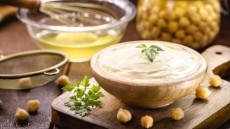Futureproofing the Food System
Building a defensible vertical farm is more than technology
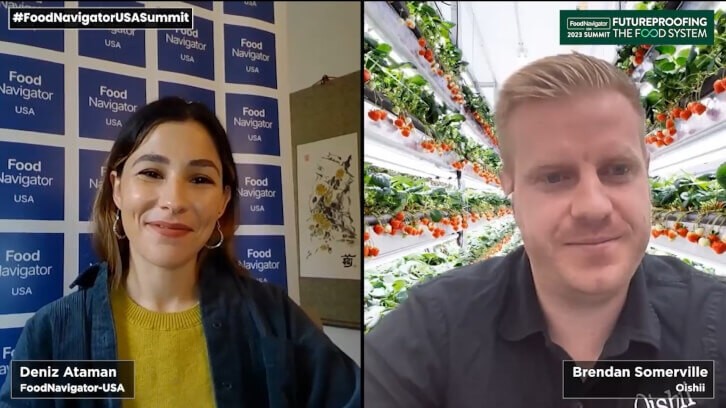
"This is a very complex industry. You have engineering, construction, site selection, plant science, operations, distributions and top of that a product that doesn’t have an unlimited shelf life,” Brendan Somerville, co-founder, Oishii, explained during the fireside chat, Indoor farming’s moment of truth, which was part of the three-day virtual summit, Futureproofing the Food System by FoodNavigator-USA.
Leveraging investments and technology partnerships, Oishii’s strategy is focused on producing its signature Japanese Omakase and Koyo strawberry varietals year-round, which exhibit a flavor profile that’s 20 times sweeter than a regular strawberry, according to the company.
Leafy greens and microgreens are typically the most popular crops grown in vertical farms since growers can harvest the entire crop when it’s ripe. For strawberries, ripeness for each berry at different times, which require constant attention to the plant. Similar to conventional agriculture, indoor strawberries require pollination.
Oishii implements bees in the farm to pollinate the plants, alongside its AI and automation systems which regulate temperature, water, CO2, humidity, lighting and nutrient mix to deliver a consistent quality.
“In leafy greens, you can have that crop hanging out for weeks until you harvest it and then you harvest the whole thing. But in strawberries, you can’t just harvest the entire strawberry plant and give it to the consumer because you have [a few] ripe strawberries. So when we automate our technology, we need to see that product every single day so we can harvest at perfect ripeness, which is a much more challenging kind of automation problem,” Somerville explained.
The brand’s partnership with Japanese robotics company, Yaskawa Electric Corp., is combined with Oishii’s internal software which controls environmental elements, to select its strawberries at the peak moment of ripeness while allowing budding berries to grow.
Somerville added, “If you look into our farms, you’ll see the Yaskawa blue robots partnered with our vision software which is really what enables those robotic arms to harvest. It’s not just automation, but a holistic approach including environmental control systems, water reuse and reclamation systems, energy optimization system software and controls and adding a partnership to your scalable automation efforts.”
Building brand loyalty within the produce category
Within packaged foods, loyalty among produce brands is typically lower than other categories. Somerville thinks that with the combination of technology and crop type, it’s an opportunity for vertical farms to connect with consumers through taste and consistency.
“When you ask people what their favorite brand is, most people won’t mention produce brands. So, we see this as both a challenge and a huge opportunity to deliver excellent brands within the produce category and really the foundation for our brand is on delivering product quality consistently,” he said.
He elaborated further, saying, “What we’re able to deliver with our vertical farming technology in year-round growing is a consistency in that experience and tying to our brand to the consistency of having excellent product quality.”
Given the ability to expand the range of sweetness in strawberries, Oishii continues to explore other produce categories based on its pollination technology and filling in the taste gaps of other crops, including tomatoes and melons.
“When we think about new produce categories, we think about two things: taste differentiation opportunity, what are the crops where you have a big taste gap between what’s amazing and what’s not? And we also think about which crops can we apply our flowering technology to?” he added.
Register for free to watch this session and other Futureproofing the Food System sessions on demand. The recording of this presentation will be available for three months after Nov. 14.

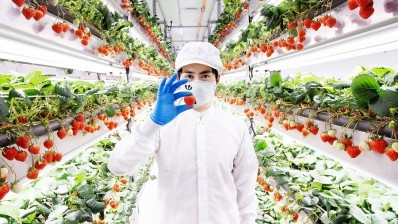
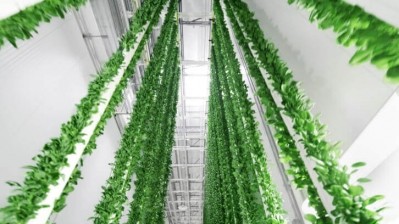
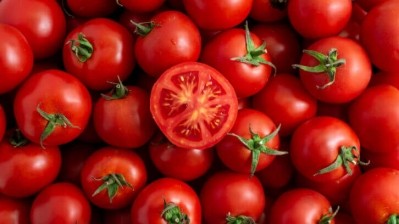
![[Watch on-demand] Building resilient supply chains from seed to field and ‘farm gate to dinner plate’](/var/wrbm_gb_food_pharma/storage/images/_aliases/wrbm_medium/publications/food-beverage-nutrition/foodnavigator-usa.com/article/2023/11/17/watch-on-demand-building-resilient-supply-chains-from-seed-to-field-and-farm-gate-to-dinner-plate/16935645-2-eng-GB/Watch-on-demand-Building-resilient-supply-chains-from-seed-to-field-and-farm-gate-to-dinner-plate.jpg)


